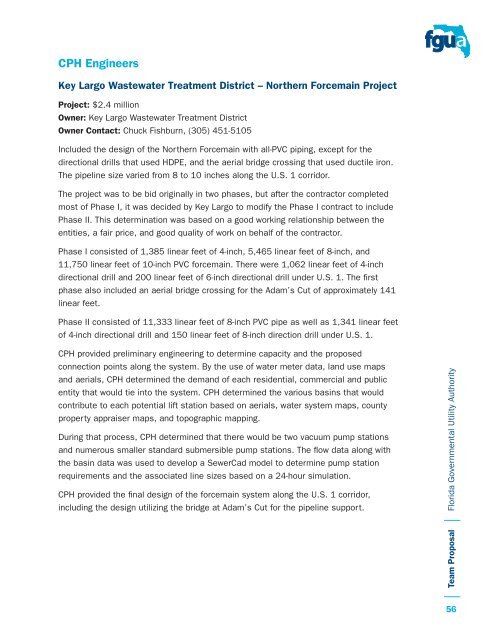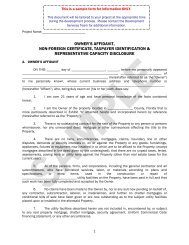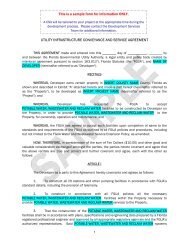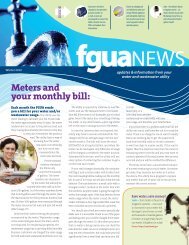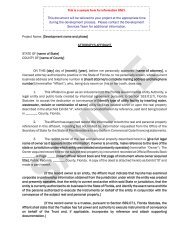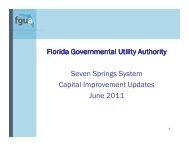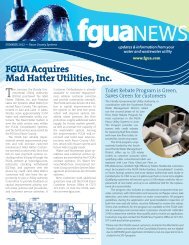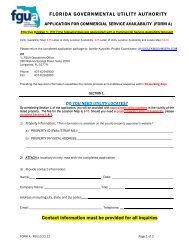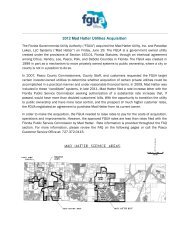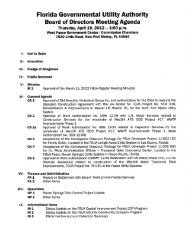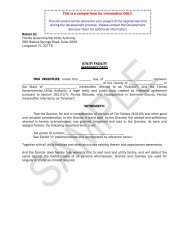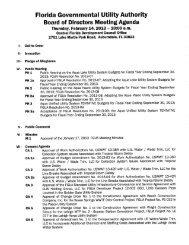Supplemental Agenda Items - FGUA
Supplemental Agenda Items - FGUA
Supplemental Agenda Items - FGUA
You also want an ePaper? Increase the reach of your titles
YUMPU automatically turns print PDFs into web optimized ePapers that Google loves.
CPH Engineers<br />
Key Largo Wastewater Treatment District – Northern Forcemain Project<br />
Project: $2.4 million<br />
Owner: Key Largo Wastewater Treatment District<br />
Owner Contact: Chuck Fishburn, (305) 451-5105<br />
Included the design of the Northern Forcemain with all-PVC piping, except for the<br />
directional drills that used HDPE, and the aerial bridge crossing that used ductile iron.<br />
The pipeline size varied from 8 to 10 inches along the U.S. 1 corridor.<br />
The project was to be bid originally in two phases, but after the contractor completed<br />
most of Phase I, it was decided by Key Largo to modify the Phase I contract to include<br />
Phase II. This determination was based on a good working relationship between the<br />
entities, a fair price, and good quality of work on behalf of the contractor.<br />
Phase I consisted of 1,385 linear feet of 4-inch, 5,465 linear feet of 8-inch, and<br />
11,750 linear feet of 10-inch PVC forcemain. There were 1,062 linear feet of 4-inch<br />
directional drill and 200 linear feet of 6-inch directional drill under U.S. 1. The first<br />
phase also included an aerial bridge crossing for the Adam’s Cut of approximately 141<br />
linear feet.<br />
Phase II consisted of 11,333 linear feet of 8-inch PVC pipe as well as 1,341 linear feet<br />
of 4-inch directional drill and 150 linear feet of 8-inch direction drill under U.S. 1.<br />
CPH provided preliminary engineering to determine capacity and the proposed<br />
connection points along the system. By the use of water meter data, land use maps<br />
and aerials, CPH determined the demand of each residential, commercial and public<br />
entity that would tie into the system. CPH determined the various basins that would<br />
contribute to each potential lift station based on aerials, water system maps, county<br />
property appraiser maps, and topographic mapping.<br />
During that process, CPH determined that there would be two vacuum pump stations<br />
and numerous smaller standard submersible pump stations. The flow data along with<br />
the basin data was used to develop a SewerCad model to determine pump station<br />
requirements and the associated line sizes based on a 24-hour simulation.<br />
CPH provided the final design of the forcemain system along the U.S. 1 corridor,<br />
including the design utilizing the bridge at Adam’s Cut for the pipeline support.<br />
Team Proposal Florida Governmental Utility Authority<br />
56


